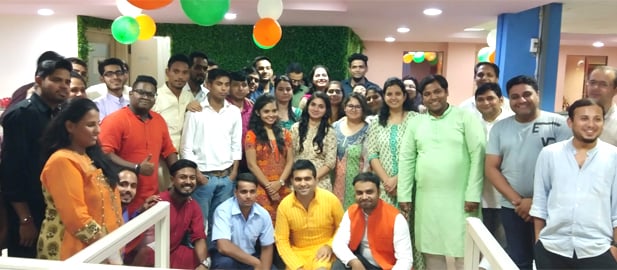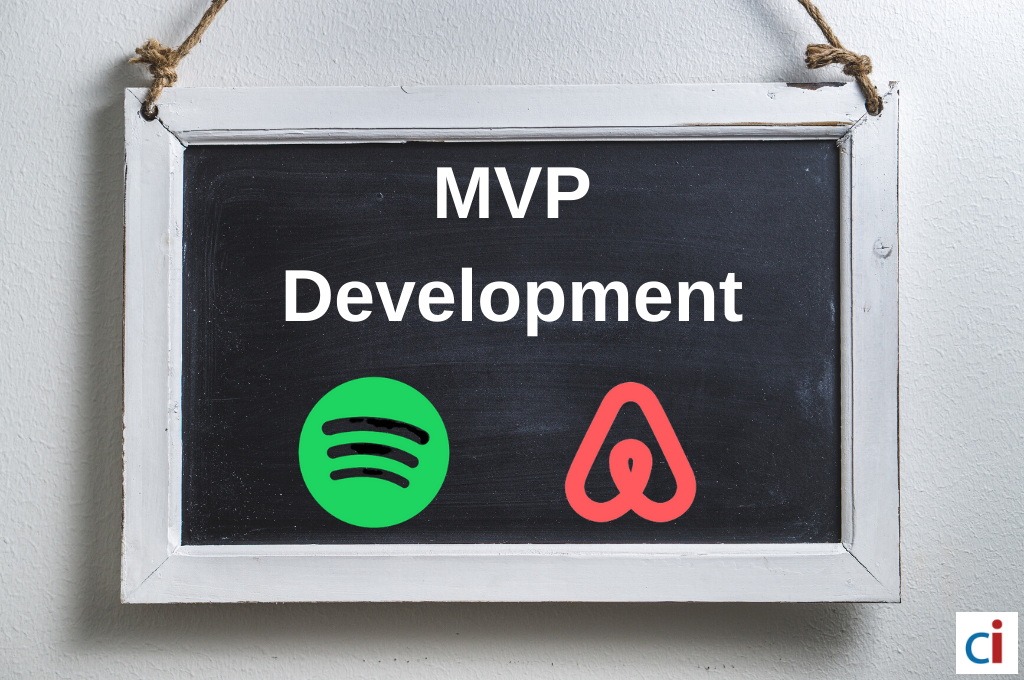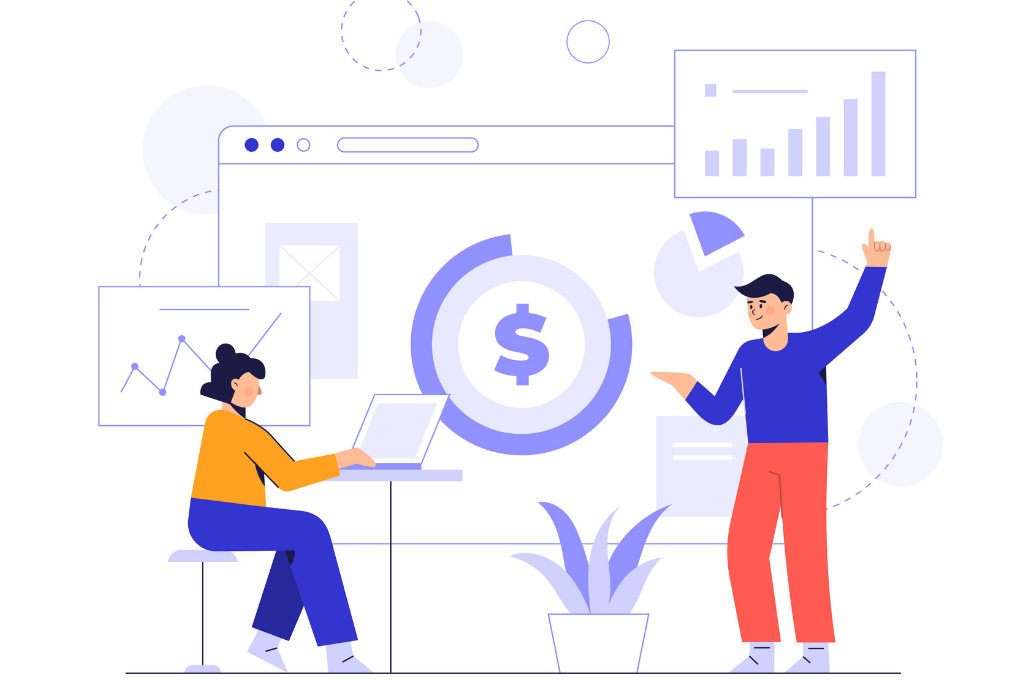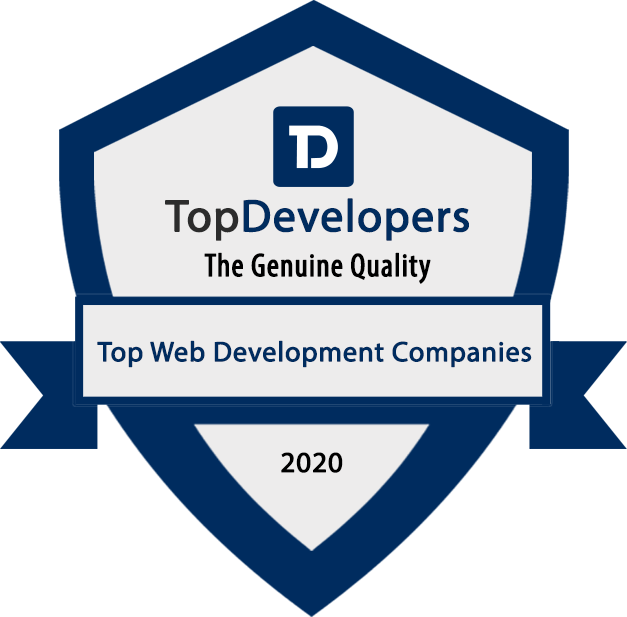1. Introduction: The Power of MVPs in 2025
The startup world is a fast-paced, ever-evolving ecosystem, where the journey from an idea to a successful business is often filled with uncertainty, challenges, and unpredictability. In this dynamic environment, many entrepreneurs seek a shortcut to success, trying to find a proven formula to reduce risks and ensure their ideas gain traction quickly. One of the most powerful tools that have been used to achieve this is the Minimum Viable Product (MVP) strategy.
An MVP is the initial version of a product that includes only the core features necessary to solve a specific problem for a targeted group of users. The goal is to build a simple, functional version of a product that can be launched quickly, tested in the market, and iterated based on real user feedback. In essence, an MVP allows startups to “fail fast” and learn from their mistakes early in the development process, which ultimately reduces the risks of investing time and money in the wrong direction.
The MVP strategy isn’t just about launching a prototype—it’s about efficiently testing hypotheses and ideas with minimal investment. It allows entrepreneurs to understand their audience's needs, behavior, and willingness to adopt their solutions before they pour significant resources into a fully-featured product. This principle has been championed by some of the most successful companies in the world, including Uber, Airbnb, and Spotify, all of which started with simple MVPs and grew to become industry-defining companies.
In 2025, the relevance of MVPs is stronger than ever. With the explosion of new tools, technologies, and platforms, it’s easier for entrepreneurs to build, test, and iterate on their MVPs faster than ever before. From no-code development tools to AI-powered analytics, modern startups can now launch their products with speed, precision, and data-backed insights. With the advent of artificial intelligence (AI), machine learning (ML), and automation, the MVP process in 2025 allows entrepreneurs to scale quickly and optimize their offerings based on real-time data.
However, launching an MVP is not a simple or easy process. It requires a deep understanding of the market, the problem you are solving, and your target audience. It also demands that founders stay focused on their core value proposition and resist the urge to overcomplicate their product in the early stages. While MVPs have helped build some of the biggest companies today, the journey is not without its obstacles.
This article will explore how Uber, Airbnb, and Spotify utilized MVPs to disrupt their respective industries and grow into multi-billion-dollar companies. By examining their MVP journeys, we’ll uncover key lessons that startups can apply in 2025 to increase their chances of success. Whether you are a budding entrepreneur or an established founder looking to refine your MVP strategy, the insights shared in this article will help you better understand how MVPs can be leveraged for maximum impact.
By the end of this blog, you’ll gain a clear understanding of the MVP process, how to apply it to your startup, and why it's still one of the most important strategies for turning your idea into a thriving business.
2. What is an MVP? A Brief Recap
Before diving into the MVP journeys of Uber, Airbnb, and Spotify, it’s essential to have a clear understanding of what an MVP is and why it’s so important for startups.
An MVP, or Minimum Viable Product, is a concept popularized by Eric Ries in his book The Lean Startup. It refers to a product version that includes only the core features necessary to address the key problem a startup aims to solve. The idea is to build the simplest version of the product, with just enough functionality to provide value to early adopters. This allows startups to quickly test whether their assumptions about the product and the market are correct, based on real-world data.
An MVP doesn’t have to be perfect—it just needs to work well enough to validate the core hypothesis. The core hypothesis is essentially the problem you believe exists in the market and your proposed solution to that problem. Once the MVP is launched, startups collect feedback, which then guides further iterations of the product.
Evolution of the MVP Concept
When the MVP concept was first introduced, it focused mainly on launching a product with minimal features, allowing startups to test the waters before committing to extensive development. However, as the startup ecosystem has evolved, so too has the concept of the MVP. Today, MVPs are more than just “minimal” versions—they can include data-driven features, prototypes with higher fidelity designs, and elements of machine learning or AI that help solve problems in real time.
The Modern MVP
In 2025, the landscape for MVPs has dramatically changed. Modern MVPs no longer only rely on basic versions of a product but often leverage AI, big data, and cloud technologies. Startups can now test their ideas more comprehensively, providing rich, real-time insights that help validate or invalidate assumptions. The MVP is not just about the basic core features anymore but is often a more sophisticated prototype with early-stage market testing and AI-backed features for user engagement.
MVP vs. MMP vs. MVPr
In addition to MVP, there are two other related terms that are important for entrepreneurs to understand—Minimum Marketable Product (MMP) and Minimum Viable Product with Ready-to-Launch (MVPr).
· Minimum Marketable Product (MMP): An MMP is a version of your product that is ready for marketing and selling. It includes not only core features but also enough features to make the product attractive to customers. The goal of an MMP is to create a product that can be sold and marketed to early adopters who are willing to pay for the product, even if it's not fully polished.
· Minimum Viable Product with Ready-to-Launch (MVPr): This product is typically more advanced than an MVP but still retains the key characteristics of an MVP. It’s a version that has undergone significant testing, includes refined features, and is market-ready, but may not yet include every feature that will eventually be included in the full product.
Understanding these distinctions is crucial because each type of product serves a different purpose during the startup journey. The MVP is focused on testing the idea, while the MMP and MVPr are concerned with market fit and scaling. In 2025, the decision to launch an MVP or MMP depends largely on the type of business, the market you are entering, and the resources available.
3. The MVP Journey of Uber, Airbnb & Spotify
Now let’s take a closer look at how Uber, Airbnb, and Spotify used MVPs to disrupt their respective industries and grow to become some of the most valuable tech companies in the world.
Uber: From Concept to Global Ride-Hailing Giant
Uber’s journey began with a very simple MVP. In 2009, the company’s founders, Travis Kalanick and Garrett Camp, launched an app that allowed users to hail black cars in San Francisco. At this early stage, Uber was far from the complex ride-hailing platform it is today. The MVP was focused solely on providing a better transportation option for high-end consumers who couldn’t find reliable, quality transportation in the city.
· The Simple MVP: The first version of Uber’s app wasn’t focused on expanding into a full transportation platform—it was designed to solve a specific problem: the difficulty of finding a black car in a busy city. The MVP didn’t include any of the other features Uber offers today, such as the ability to choose a car type, calculate a fare estimate, or track the driver’s location in real time.
· Testing with Early Adopters: Uber’s MVP was tested with early adopters who provided valuable feedback on the app’s performance and usability. The team used this feedback to improve the app’s functionality and add new features that were aligned with user needs, such as the ability to pay directly through the app. These iterations were instrumental in Uber’s growth, helping it evolve into the global leader in ride-hailing services.
· Expansion and Pivoting: Uber didn’t just stick to its initial MVP; it expanded and iterated the product based on user feedback. For example, Uber expanded its services from luxury black cars to everyday car services, creating UberX, and later UberPOOL to allow multiple users to share a ride. The company also used data analytics to optimize its pricing model, adjust driver incentives, and improve its user experience.
· Key Lessons from Uber:
o Start simple, solve one problem: Uber’s initial MVP was centered on solving a single, clear problem—getting a high-end car service at the touch of a button.
o Use feedback for rapid iteration: Uber continuously improved its app by listening to its users and applying their feedback.
o Embrace data: Uber used data analytics to optimize its platform, leading to more efficient rides and better user experiences.
Airbnb: Revolutionizing the Hospitality Industry
Airbnb’s MVP is another excellent example of how a simple product concept can lead to massive success. Founded by Brian Chesky, Joe Gebbia, and Nathan Blecharczyk, Airbnb initially started by renting out air mattresses in their own apartment to conference-goers who couldn’t find hotel accommodations. The MVP was simple but effective.
· The Air Mattress MVP: The founders of Airbnb launched a website that listed their apartment and offered air mattresses for rent to attendees of a conference in San Francisco. The listing was minimal, featuring photos of the apartment and the air mattresses. The MVP didn’t include features such as reviews, a sophisticated search function, or full listings for various properties.
· Testing Assumptions: The early success of the MVP came from validating the core hypothesis that people would be willing to pay for short-term lodging that wasn’t a traditional hotel. The founders were able to gather valuable data from early users, including what worked well and what didn’t. This allowed them to make quick improvements, adding features such as secure payment systems, communication tools for hosts and guests, and property reviews.
· Pivoting and Expanding: Initially, Airbnb focused on renting out air mattresses. But as the concept proved successful, the company pivoted and began allowing hosts to list entire apartments and homes, broadening the scope of what Airbnb could offer. This expansion allowed Airbnb to meet a wide variety of user needs, from budget travelers to luxury vacationers.
· Key Lessons from Airbnb:
o Test with minimal features: Airbnb started with a basic website that tested the core concept of renting short-term accommodation. This allowed them to prove the viability of the idea before investing heavily in development.
o Solve a real problem: The problem Airbnb solved was the lack of affordable and unique short-term lodging options.
o Iterate based on feedback: The company used early user feedback to refine its product and expand its offerings.
Spotify: Music Streaming and the Role of MVP in User-Centric Growth
Spotify’s MVP was unique because it was launched in a highly competitive market with established players like Apple iTunes and Pandora. However, Spotify’s MVP focused on providing an easy-to-use, ad-supported music streaming platform that would attract users who wanted a free, legal alternative to piracy.
· The MVP Focused on Music Streaming: Spotify’s MVP was designed to provide users with a simple way to stream music for free with ads. The platform didn’t have the extensive features it does today, such as curated playlists or personalized recommendations. Instead, it focused on making the music streaming experience as seamless and user-friendly as possible.
· User-Centric Growth: Spotify’s freemium model was integral to its MVP. The company tested its pricing strategy by offering a free, ad-supported version and a paid, ad-free version. This approach allowed Spotify to gather feedback on its monetization strategy early on, leading to the development of additional features like curated playlists and personalized music recommendations.
· Data-Driven Decisions: Spotify used data to improve user experience, tailoring playlists and recommending music based on individual preferences. The company’s MVP enabled it to collect vast amounts of user data, which became a cornerstone of its business strategy.
· Key Lessons from Spotify:
o Create a seamless user experience: The MVP focused on simplicity, offering users a seamless experience while listening to music.
o Monetization from the start: Spotify didn’t wait until the product was fully developed before introducing its freemium model. The MVP allowed them to test the market and optimize pricing early on.
o Leverage data: Spotify used early data to enhance the user experience and refine its platform based on actual usage.
4. Key Lessons from Uber, Airbnb & Spotify for Startups in 2025
The MVPs of Uber, Airbnb, and Spotify have provided key lessons that modern startups can apply to achieve success in 2025. Here are the critical lessons these companies taught us, along with some contemporary insights into how to apply them to today’s rapidly changing startup ecosystem.
Start Small, Think Big
One of the most important lessons that Uber, Airbnb, and Spotify teach us is to start with a simple solution that addresses one core problem and solve it well. While these companies have grown to offer a variety of services and features, they all started with a singular, clear value proposition that they honed and perfected.
In 2025, this lesson remains just as relevant. The temptation to build a feature-rich product right out of the gate can be overwhelming. However, trying to do too much too soon can lead to scope creep, unnecessary complexity, and ultimately a delayed product launch. Instead, startups should focus on identifying one key problem they can solve for their target audience, then build an MVP that directly addresses that issue.
This principle is especially important for founders with limited resources. In the early days of a startup, it’s better to have a focused product with few features than to have an over-ambitious product that lacks a clear direction. Focus on the problem and the solution, and leave the complexity for later.
Iterate Rapidly, Collect Feedback
The next critical lesson from these unicorns is the importance of rapid iteration based on user feedback. Uber, Airbnb, and Spotify didn’t launch a “finished” product. Instead, they launched MVPs, gathered feedback from early adopters, and used that feedback to refine and improve their products.
In 2025, startups have even more tools at their disposal to gather feedback quickly and iterate efficiently. User feedback tools like Hotjar, Intercom, and UserTesting allow founders to gather direct input from their target audience. Additionally, A/B testing and analytics platforms help entrepreneurs understand how users interact with their products, so they can optimize features and functionalities in real-time.
Rapid iteration doesn’t just mean fixing bugs or improving the user interface. It also means testing new features, gathering data, and being willing to pivot if early assumptions are proven wrong. This feedback loop is vital for staying agile and adapting quickly to changing market conditions.
Be Ready to Pivot
In the early stages, startups must be ready to pivot when necessary. As seen with Airbnb and Spotify, the ability to adapt your business model or product offering based on market demand can determine your success.
Airbnb’s initial concept of renting air mattresses evolved into a global platform for renting out entire homes. Spotify, originally focused on providing free music streaming with ads, gradually evolved into a premium service offering a more personalized experience. Both companies were willing to adapt based on user feedback and market trends.
In 2025, pivoting has become a standard part of the startup process. The ability to pivot strategically can be crucial for a startup’s long-term success. Entrepreneurs should pay attention to early metrics and be willing to make bold decisions based on what the data tells them.
Use Data to Drive Decisions
Another key takeaway from the MVP journeys of Uber, Airbnb, and Spotify is the importance of data-driven decision-making. These companies used data to refine their products, enhance user experiences, and improve operational efficiency. Uber relied on data to optimize driver routes and pricing, Airbnb used it to manage property listings, and Spotify employed it to refine user recommendations.
Today, data is more accessible than ever, with AI tools, analytics platforms, and customer feedback systems providing valuable insights into user behavior. In 2025, entrepreneurs can use data to make smarter decisions about product development, marketing, and scaling. The key is to gather as much relevant data as possible and use it to inform every step of the MVP development process.
Scaling with Purpose
Once an MVP proves successful and the product-market fit is achieved, the next challenge is scaling. Uber, Airbnb, and Spotify all faced significant scaling challenges as their user bases grew. The companies invested heavily in infrastructure, customer support, and marketing to ensure that they could handle the increased demand.
In 2025, startups have access to cloud platforms, automation tools, and global networks that can help them scale efficiently. However, scaling is not just about adding more users; it’s about ensuring that your business operations are prepared for growth.
Startups should build their MVPs with scalability in mind. From user experience to backend infrastructure, every part of the product should be able to scale efficiently as the business grows. Proper planning and strategic investments at the MVP stage can pave the way for smoother scaling later on.
5. Modern Trends in MVP Development for 2025 Startups
In 2025, building an MVP is a different ballgame compared to when Uber, Airbnb, and Spotify first launched their products. The rise of no-code platforms, AI tools, and data-driven decision-making has made it easier and faster than ever for startups to launch and test their MVPs. Here are some of the most prominent trends shaping the MVP landscape today.
· No-Code/Low-Code Tools: These platforms have democratized product development, allowing founders to quickly build functional MVPs without needing extensive technical knowledge. Tools like Bubble, Adalo, and Webflow empower entrepreneurs to launch their products quickly, test ideas, and iterate based on feedback.
· AI & Machine Learning in MVP Testing: AI and ML are revolutionizing MVP testing. Startups can use predictive analytics to better understand user behavior, personalize the user experience, and optimize their offerings based on data insights.
· Integration with Marketplaces and Platforms: Many startups today leverage existing ecosystems like Amazon Web Services (AWS), Shopify, or Stripe to reduce the time and cost involved in building MVPs. These platforms provide pre-built infrastructure that can be customized to suit a startup's needs.
· Sustainability and Ethical Considerations: With increasing consumer awareness around sustainability and ethical practices, startups in 2025 must consider these factors when developing their MVPs. By aligning their products with social and environmental values, startups can attract more conscientious consumers.
6. Common MVP Mistakes to Avoid
While building an MVP is essential to the startup journey, it’s easy to make mistakes that can derail progress. Here are some of the most common MVP mistakes to avoid:
· Building Too Much Too Soon: One of the biggest mistakes is trying to develop a product with too many features. Focus on the core value proposition and test that with your audience. Adding features prematurely can waste resources and distract from the MVP’s main goal.
· Neglecting Market Research: Many entrepreneurs make the mistake of assuming they know exactly what their customers want without validating it. Market research is essential to ensure that your MVP aligns with real user needs. Conduct surveys, interviews, and competitor analysis to get a clear picture of market demand.
· Ignoring User Feedback: Early adopters are your most valuable source of feedback. Ignoring their input can result in building a product that doesn’t meet user expectations. Customer feedback loops are critical for refining your MVP and guiding future product iterations.
· Overlooking Long-Term Vision: While an MVP is about testing assumptions, it’s also important to have a long-term vision for the product. Don't get caught up in short-term success at the expense of the product’s overall direction.
7. Steps to Building Your Own MVP in 2025
Now that you have learned from the MVP journeys of Uber, Airbnb, and Spotify, it’s time to build your own MVP. Here’s a step-by-step guide to building an MVP in 2025:
-
Define the Problem and Solution: Clearly identify the problem you are solving. This is the foundation of your MVP. Create a solution that directly addresses this issue.
-
Select Tools and Technologies: Choose the best tools for your MVP. Whether it's no-code platforms or traditional development tools, select the ones that fit your goals and budget.
-
Identify Core Features: Focus on the most essential features of your product. The goal is to solve the core problem with minimal features, allowing for quick testing and iteration.
-
Launch and Collect Feedback: Once your MVP is live, gather as much feedback as possible from users. Use this data to refine and improve the product.
-
Iterate Based on Insights: Continue improving the MVP based on the feedback and user data you receive. Iterate quickly, testing new ideas and features to find the right market fit.
-
Plan for Scaling: As you continue testing and refining your MVP, begin to think about how you will scale your product. Consider backend infrastructure, user experience, and business operations to ensure smooth growth.
8. Conclusion: The Future of MVPs in Startup Success
In 2025, the MVP remains an indispensable tool for startup founders. Whether you’re launching a new tech company or creating a consumer product, the ability to build a simple, functional version of your idea and test it in the market is key to success. By learning from the MVP journeys of Uber, Airbnb, and Spotify, you can gain invaluable insights into how to use MVPs effectively to test assumptions, iterate quickly, and scale with purpose.
As technologies continue to evolve, the tools available for building MVPs are only going to improve. From AI-powered analytics to no-code platforms, there’s never been a better time to build and test a product in a fast, efficient way. By embracing an MVP mindset and staying agile, startups can minimize risks, validate ideas early, and ultimately build products that truly meet user needs.
The future of MVPs is all about speed, data, and user-centric design. In 2025, startups that can leverage modern tools, incorporate user feedback quickly, and scale efficiently will be best positioned to become the next generation of unicorns.
Now, armed with the lessons learned from some of the most successful MVPs in the world, it’s time to start building. Take the plunge, test your idea, and start your own MVP journey today.
Take the Next Step with Confidence
Building a successful MVP in 2025 requires more than just a great idea—it demands the right strategy, technology stack, and execution partner. At Classic Informatics, we specialize in helping startups and product leaders turn their vision into scalable, market-ready products. Whether you're validating an idea, building your MVP, or scaling your digital product, our expert teams in product engineering, AI integration, and cloud-native development can help you every step of the way.
Let’s build your next breakthrough—faster, smarter, and with purpose. Talk to an MVP Expert Today





















